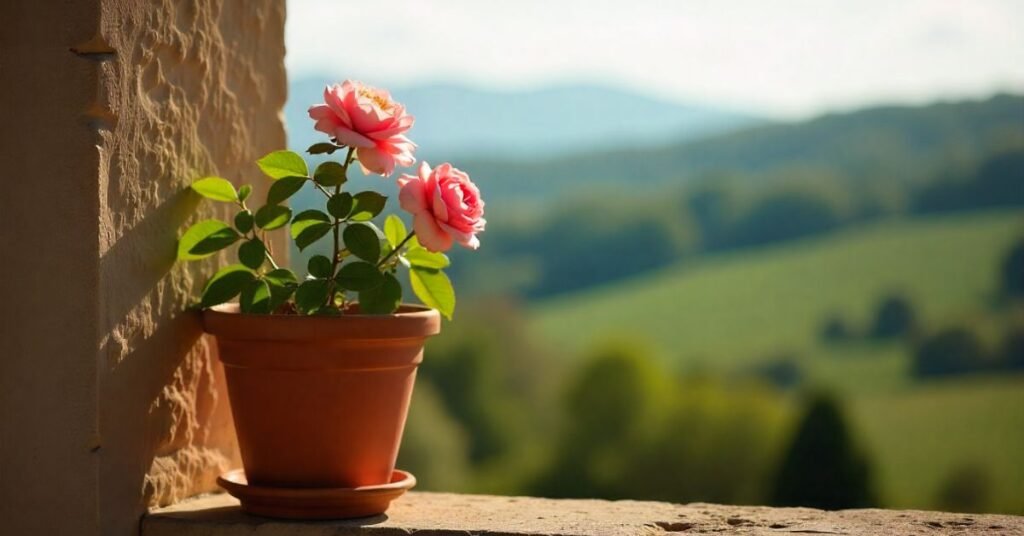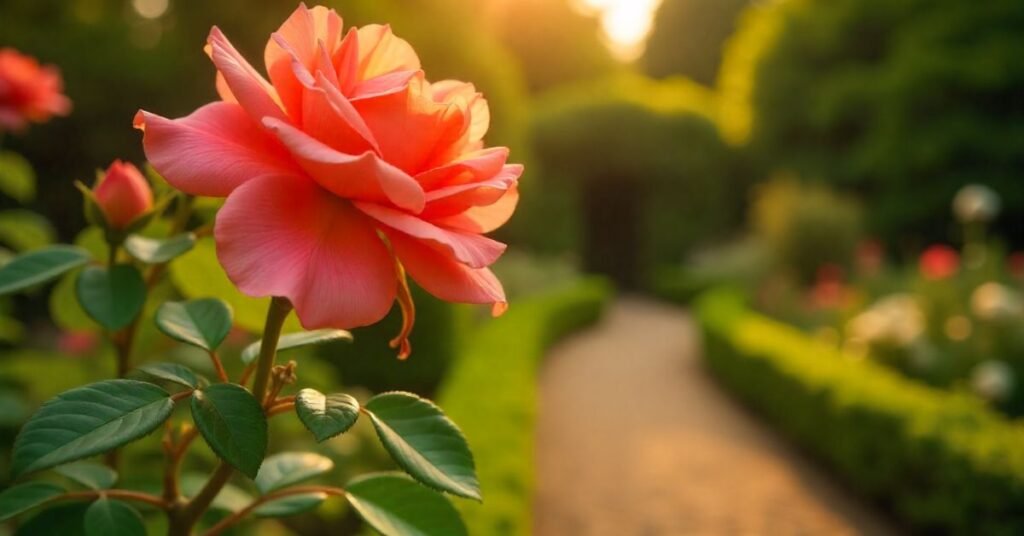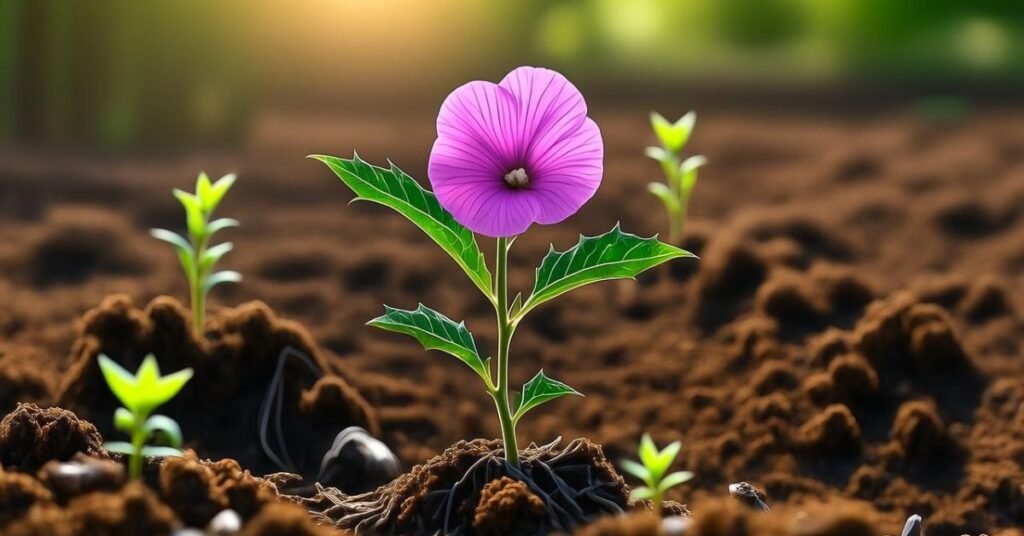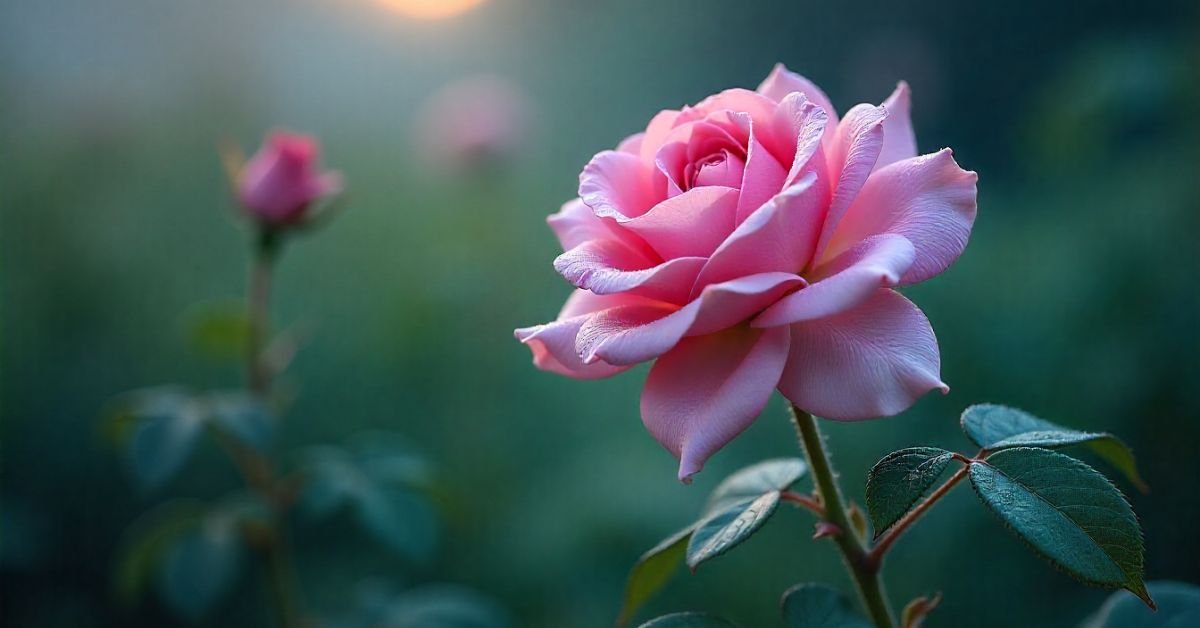Introduction
Damask rose plants are old garden roses. Gardeners know them for their rich fragrance and soft pink blooms. Gardeners have grown these plants for centuries. People use them for beauty, perfume, and herbal purposes.
Imagine a garden filled with their sweet scent. Damask roses can turn any space into a calm and beautiful place. If you love roses, you will quickly make this plant your favorite. It is not just pretty but also useful in many ways.
Planting damask rose plants is simple. They need full sun and well-drained soil. Regular watering helps them grow strong. With little care, you can enjoy healthy plants and many flowers each season.
Plant Living History in Your Garden
People have loved the Damask rose for centuries. Its strong fragrance and rich history make it special. Whether you plant your first rose or add to a heritage garden, this plant connects beauty with tradition.
What Sets Damask Roses Apart?
The Damask rose (Rosa × damascena) is famous for its fragrance.

The soft pink blooms give it an old-world charm. Most varieties bloom heavily in spring. Some rebloom into fall, filling the garden with waves of scented flowers.
Growing Conditions
Damask roses grow best in temperate climates. The sun should shine for six hours a day to keep them healthy. Plant them in well-drained soil with good air flow. Raised beds or garden borders work well. They are hardy in USDA Zones 4–9 and need winter chill to stay healthy.
Best Fragrant Varieties
Popular types include ‘Autumn,’ ‘Ispahan,’ and ‘Kazaniik.’ These are loved for their sweet, spicy aroma. Their petals are used to make rose oil for perfumes and wellness products.
Autumn Damask
A hardy rose with a rich, sweet-spicy scent. Its petals are often used in perfumes and skincare. Gardeners can count on it to add lasting beauty to their gardens.
Ispahan
Known for its heavy flush of soft pink blooms. Early summer is the best time to see it in bloom. Its fragrance is unforgettable and deeply sweet.
Kazaniik
This is called ‘Kazanlik,’ this rose is famous in Bulgaria for rose oil. It has layered petals and a powerful aroma. It connects gardening with cultural history.
How to Recognize a Damask Rose
- Color: Light to medium pink blooms
- Petals: Full double flowers with 20+ petals
- Fragrance: Strong, often sweet with hints of spice
- Canes: Covered in curved thorns
- Blooming: Mostly in spring, some varieties rebloom
A Bit of History in Every Bloom
Damask roses have a long history dating back thousands of years. It was likely brought to Europe during the Crusades. Its name comes from Damascus, Syria, where it was grown for centuries. In Europe, it quickly became popular in gardens and apothecaries. People valued it for beauty, rose water, oils, and even culinary uses.
Growing Damask Rose Plants: Simple Tips
Pick the Right Spot: Plant in a sunny, open area with good air circulation.
Prep Your Soil: Use neutral to slightly acidic soil. Add compost or aged manure for better growth.
Water Wisely: Keep soil evenly moist. The best way to water your lawn is to water deeply rather than frequently.
Feed for Blooms: After the first bloom, use balanced rose fertilizer.
Time to Prune: Prune in late winter or early spring. For better airflow, remove dead wood and thin branches.
Watch for Pests: Check for aphids, spider mites, and black spots. Organic sprays or oils can help control problems.
Harvesting and Using Damask Roses
Best Time: Oils are strongest in the early morning when harvested.
How to Harvest: Cut blooms above a five-leaflet set using clean shears.
Storage: Keep petals in a cool, dry place. Short term refrigeration also works.
Propagation
Damask roses can be multiplied by cuttings or layering. Both methods are so simple and effective. With patience, new plants will root and grow well.
Disease and Pest Resistance
| Problem | Signs on Plant | How to Manage |
| Black Spot | Dark spots on leaves, yellowing edges | Remove affected leaves, use fungicide |
| Powdery Mildew | White powder on leaves and buds | Improve airflow, apply organic spray |
| Aphids | Small green insects on new shoots | Wash with water or use neem oil |
| Spider Mites | Fine webs, yellow speckled leaves | Spray with water or horticultural oil |
| Cane Borers | Holes in stems, weak growth | Cut below damage, seal cane ends |
Are Damask Roses Right for You?
The Damask roses need more care than modern roses. They need water, pruning, and airflow to stay healthy. With this care, they give strong blooms and a sweet smell. These plants also bring history into your garden.

If you like tradition, Damask roses are a good choice. They grow well in the sun and in many soils. Their petals can be used for rose water and oils. They give charm and fragrance that most new roses do not have.
Facts About Damask
Damask rose plants are special and useful. Here are some quick facts:
- They come from Damascus, Syria.
- People have grown them for hundreds of years.
- Flowers are pink with a strong smell.
- Petals are used for rose water and oil.
- They bloom mainly in spring.
- They need sun and good soil to grow well.
Conclusion
Damask rose plants may need regular care, but the rewards are worth it. With proper sunlight, soil, watering, and protection from pests, these roses will thrive for years. Their timeless fragrance, beauty, and history make them a lasting treasure in any garden.
FAQs
1. Are Damask rose plants hard to grow?
No, they are quite resilient if given sunlight, good soil, and regular care.
2. How often should I water Damask roses?
Water deeply once or twice a week, depending on weather and soil conditions.
3. Do Damask roses bloom all year?
Most bloom heavily in spring, but some varieties may rebloom in late summer or fall.
4. Can I grow Damask roses in pots?
Yes, they can grow in large containers with proper drainage and regular feeding.
5. What are Damask roses mainly used for?
They are used for garden beauty, fragrance, rose oil, rose water, and even culinary purposes.


